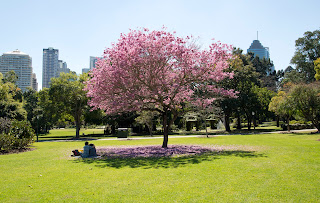10 best groundcover plants
Everyone thinks of a house with a garden. And even in that garden, the first thought goes to flowers. Let’s say you got your flowers, what’s next? A jungle with no space to set a foot in? Or an area left to be called mini-desert? The plants which make a garden are ground-covers. Groundcovers are attractive and fill the area which other plants won’t grow, and can be used as alternatives to high-maintenance lawns. Check these options out if you don’t really want a mini-desert:
1. Bigroot Geranium
Scientific name: Geranium macrorrhizum
Tough and aggressive, big root is perennial and a complete step-able, stamp and tread all you like. A low-maintenance plant, it barely grows up to 1-1.5 feet tall and loves the sun. Blooms in pink, pale pink and red or variegated and can be planted in shades. It is resilient and weather tough and can survive through droughts.
2. Spotted Dead Nettle
Lamium maculatum is considered a weed by many gardeners, dead nettle is aggressive and invasive. Densely clustered, it has beautifully nettled leaves and flowers colored in white, pink and purple and it likes shade and cool.
3. Moss Rose
Absolutely adorable plant, Portulaca grandiflora or moss rose has and tiny cup-shaped colorful flowers in red, white and orange and spreads extensively all around the space with its needle-like foliage. It is highly tolerant of poor conditions and is annual or perennial.
4. Helianthemum
This sunny little plant is commonly known as ‘Sun Rose’ or even ‘Rock Rose’ and never grows taller than 1 feet. Comes in shades of orange, pink, yellow, scarlet, and white, there are some varieties that bloom for a long time from spring to autumn and disappears in cold winter but remains evergreen in warm setups.
5. Lilyturf (Liriope)
Lily is showy and tough groundcover with lush and deep green leaves with upright tufts. Spiky and beautiful flowers in shades of violet or lavender stay until the fall. Muscari and Liriope are pretty famous.
Grow it between tall shrubs and shady places, or border alongside walkways.
6. Sweet Woodruff
Fragrant and Sweet, woodruff is an excellent ground cover if you want to add a distinct aroma to the garden. It grows best in part shade and full shade with on well-drained soil and grows up to only 8-10 inches even when in bloom. Right from mid-spring, sweet woodruff blooms in great numbers all the while releasing fragrance when crushed.
7. Creeping Thyme (Lankford)
Thymus serpyllum is low-growing aromatic and flowering herb. It is perennial and like other varieties of thyme it is edible too and adds the same flavor to the food. It barely grows up to 3 inches. Interestingly, it is deer-resistant while being an amazing alternative to grass.
8. Brass Button
A perfect lawn substitute Leptinella squalida 'Platts Black' is one plant on which you can walk on without thinking much. Brass button too forms yellow-golden flowers that bloom from spring to summer. And is equally lively in temperates to subtropical climates both.
9. Creeping Phlox
With pleasant flowers with pastel hues, Creeping Phlox is a sturdy and low-maintenance plant. It can be used in landscaping difficult areas as it can grow between rocks or cascades down slopes. It can also be used as a border to flowerbeds.
10. Sedum
The genus ‘Sedum’ has a range of ornamental plants that you can grow as a ground cover in full sun. its flowers appear in summer and sedum has about 400 species which can be grown in every climate.
Ground covers are excellent for any garden and without a doubt are necessary too. I think they just tell us to never underestimate something that small.



